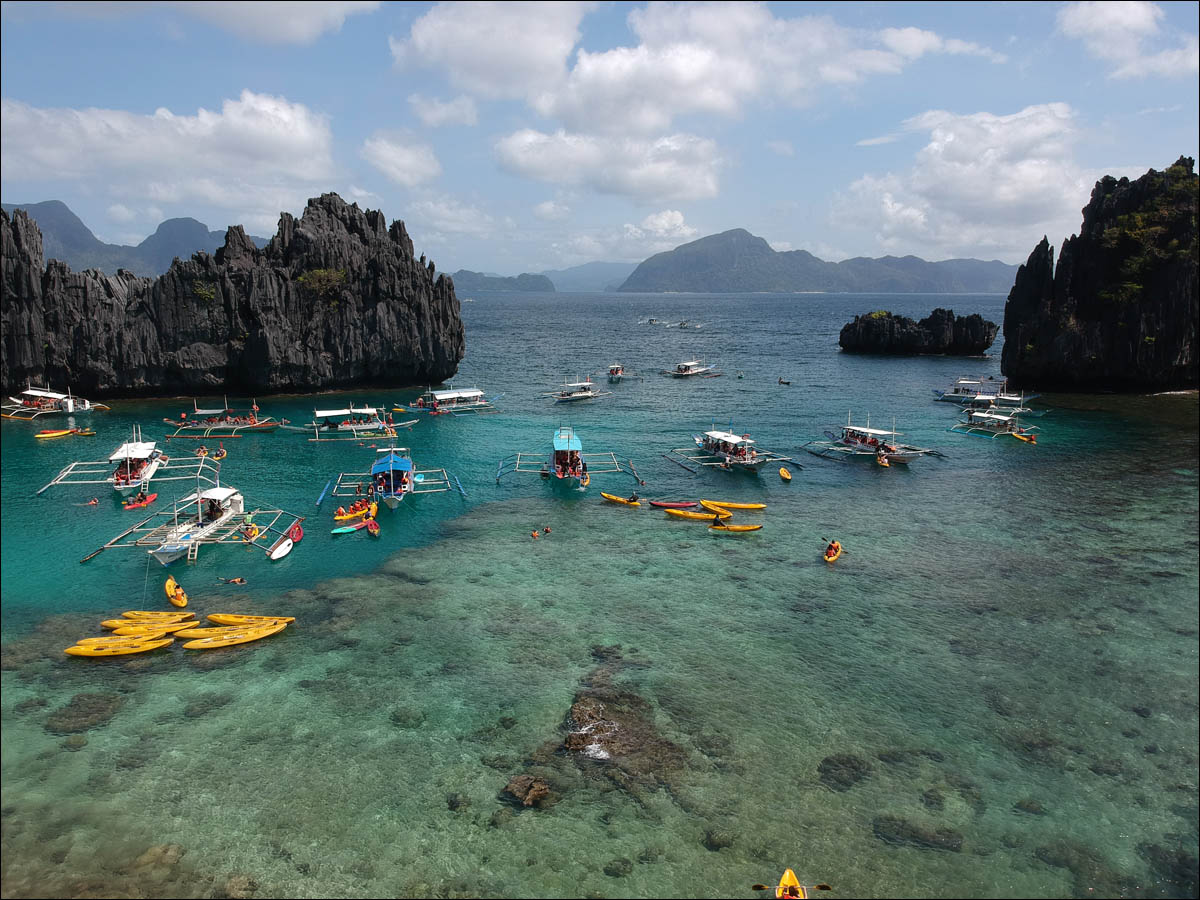
Now I will tell you about lovely people in small islands in the Philippines and the peculiarities of their interaction with the techniques of the twenty-first century. But first, a small introduction: these are the very people who reproduce almost the fastest on the planet. And they will soon rush to the Internet due to the fact that some will save money on mobile phones.
There are 100 million people in the Philippines. The natural population growth over the past year is plus 1,779,566. There are 146 million people living in Russia, and the natural growth over the past year is minus 168,000 people.
Illustration from the dialogue with the "negotiator" of the tribe of one of the islands:
- I have five brothers and four sisters.
- What time do you marry?
- At 18 years of age approximately.
- And when are you giving birth to your first child?
- About 14.
So, let's go over the small islands - the place where up to a thousand people live. Looking ahead, they live very happily, and I kind of envy them.
r / k spectrum
The breeding strategy is perhaps the closest to the r-strategy among the human population.
The rK spectrum is the number of offspring and the number of the population in which ecological balance is achievable. R-strategy assumes that you multiply at a frantic pace, the death rate is huge, but someone survives. The K-strategy assumes that you breed rarely, but accurately, and take the children. High child mortality, lack of medicines and other features of poor countries are shifting the strategy closer to r - this is diversification of risks. Good education, long life, etc. move closer to K.
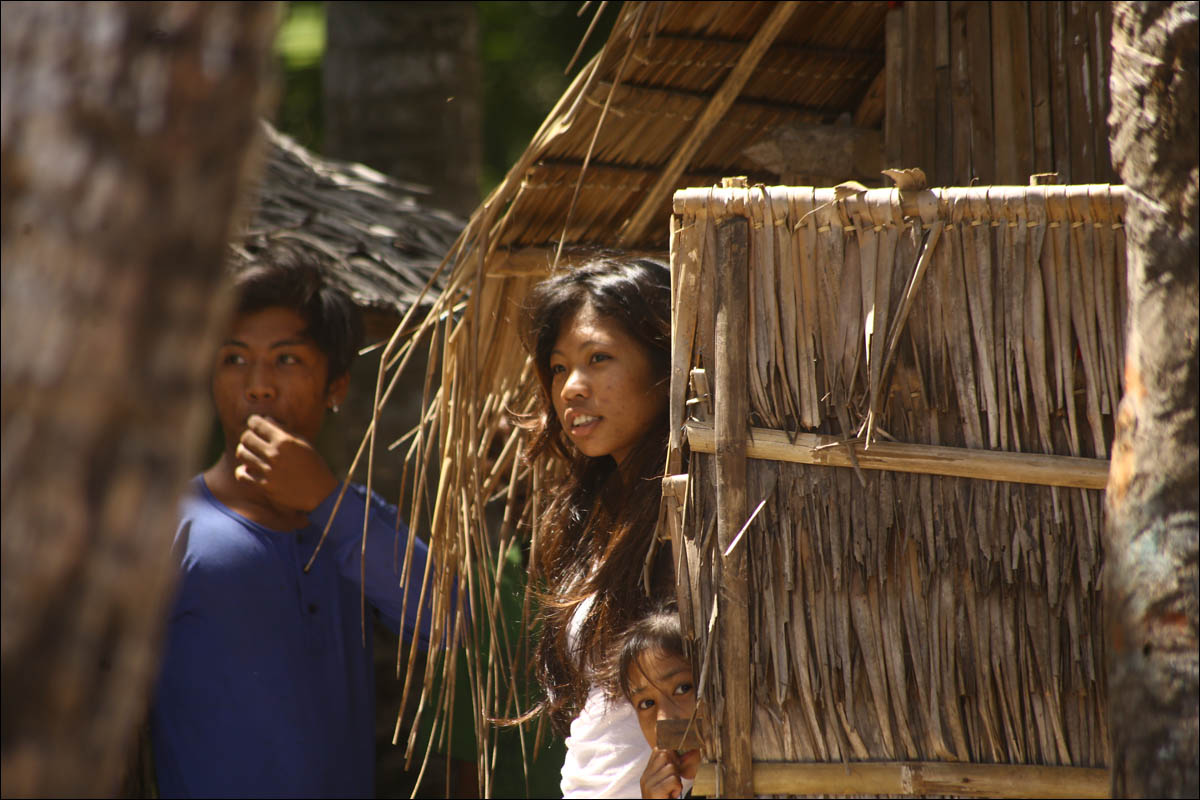 This is looking at us in the village on Kalibanbangyang.
This is looking at us in the village on Kalibanbangyang.The first illustration is technology, no power.
The first village is very simple. On the island of Luzon there is a lake in the middle. There is another island in the lake, which is also quite large - 5 thousand people settled there. In the middle of this island there is an old volcano with a huge crater. In the crater splashing warm water. Inside this crater lake there is a small island. If a small island is considered a separate volcano (of which there are 4 to 7 more on the island according to different classifications), then it will be the smallest volcano in the world. The crater is 79 meters lower than the main lake.
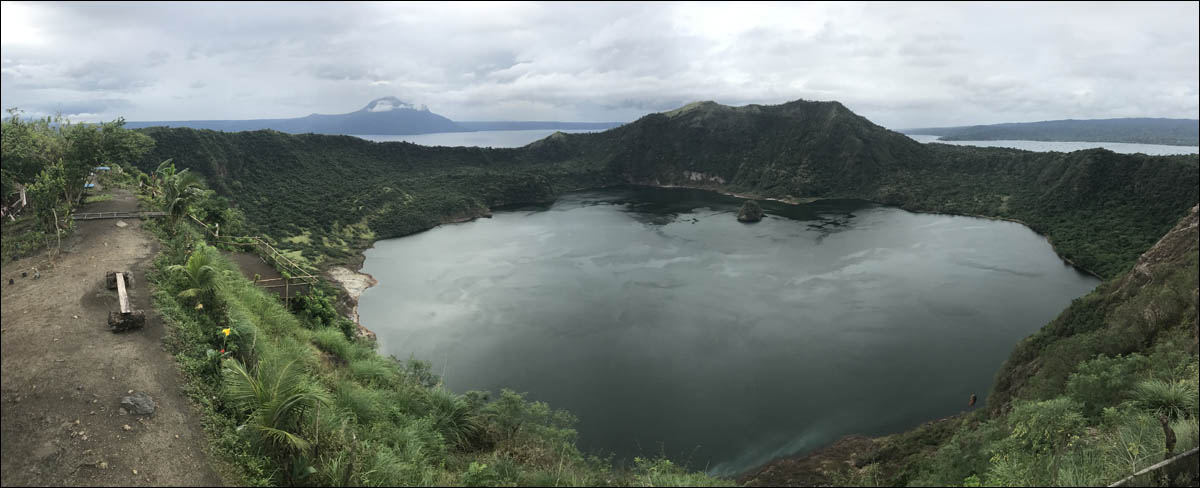 This is a crater, in it an island in the middle, outside (above the frame) - a lake, in the background you can see the land, but it's just its shores in the island of Luzon.
This is a crater, in it an island in the middle, outside (above the frame) - a lake, in the background you can see the land, but it's just its shores in the island of Luzon.Capital construction on “our” island is not done, because everything around can suddenly turn into fiery hell. That is, it is not clear whether there will be an island at all in a month. As practice shows, the strategy has a basis, because another volcano just erupted next to it, and another village suffered. Another volcano somehow put an end to the American military base, one of two in Manila. And he laid the foundation for shuttles -
jeepney . On our island, the last time it all erupted merrily in 1974.
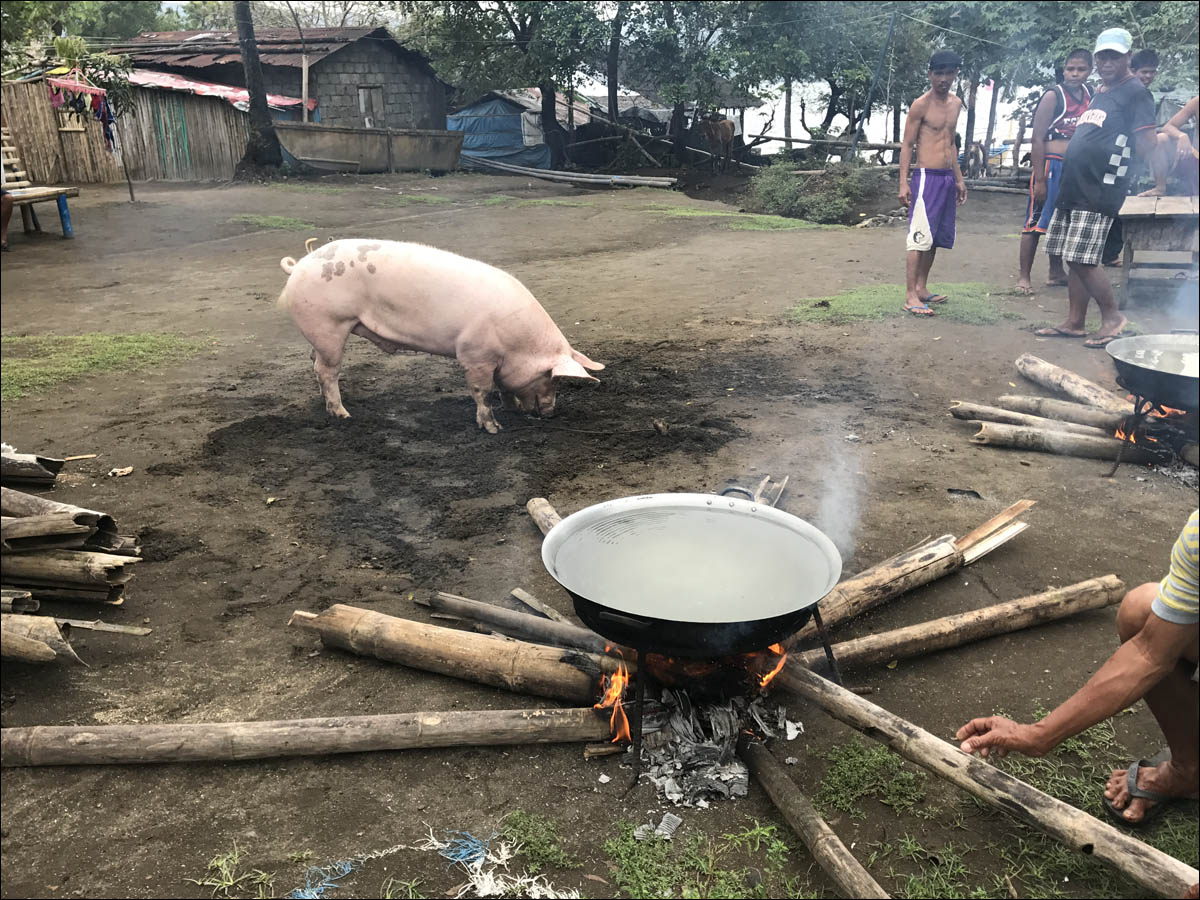
This means that there is no electricity on the island - only generators and a couple of rare solar batteries (the lake is rather cloudy and it rains a lot). There are no cars and motorcycles, but there are 1,300 horses that are used for everything, including sausage. Horses selectively bred in a rather short breed, eating no less than usual.
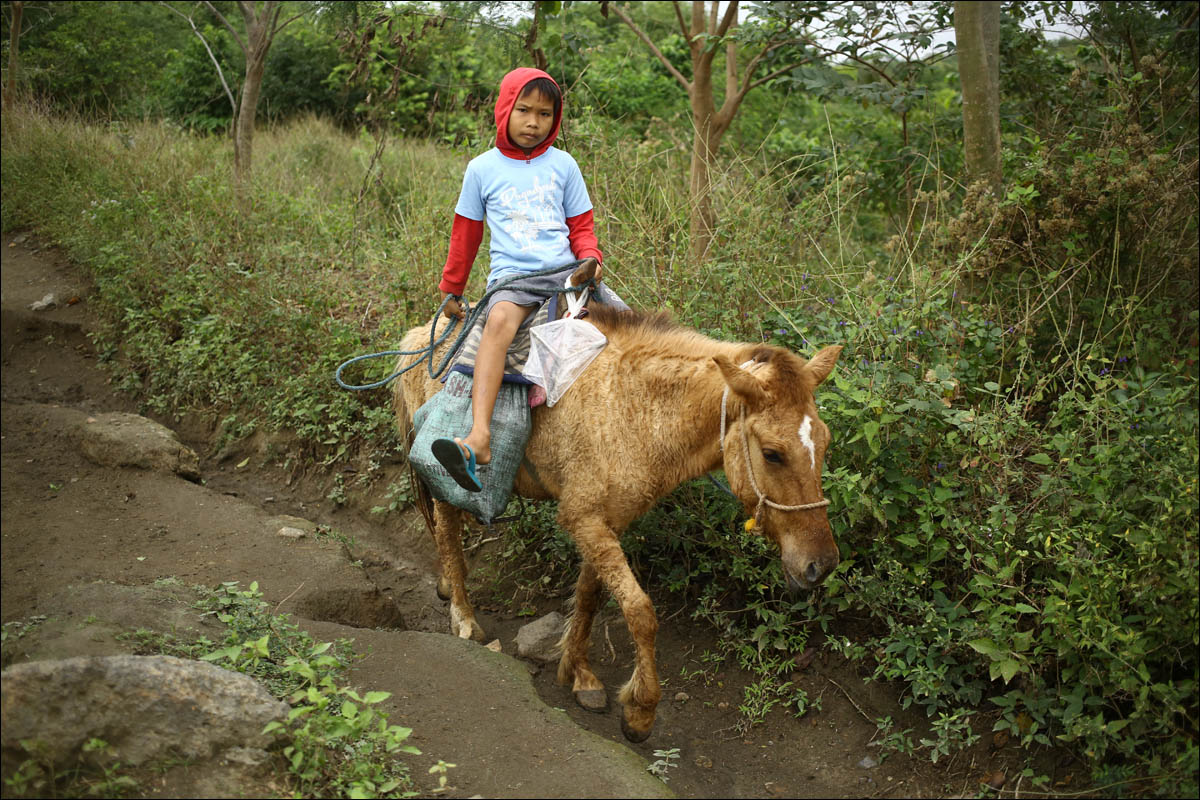
Residents are engaged in collecting (bananas), keep small kitchen gardens and large fish farms. The whole lake around is just covered with them - such floating things, inside of which there are nets with fish. It is necessary to swim on these farms 3 times a day, feed the fish and watch how it smoothly grows. Very meditative exercise. Cell tower on the "big land" covers the village.
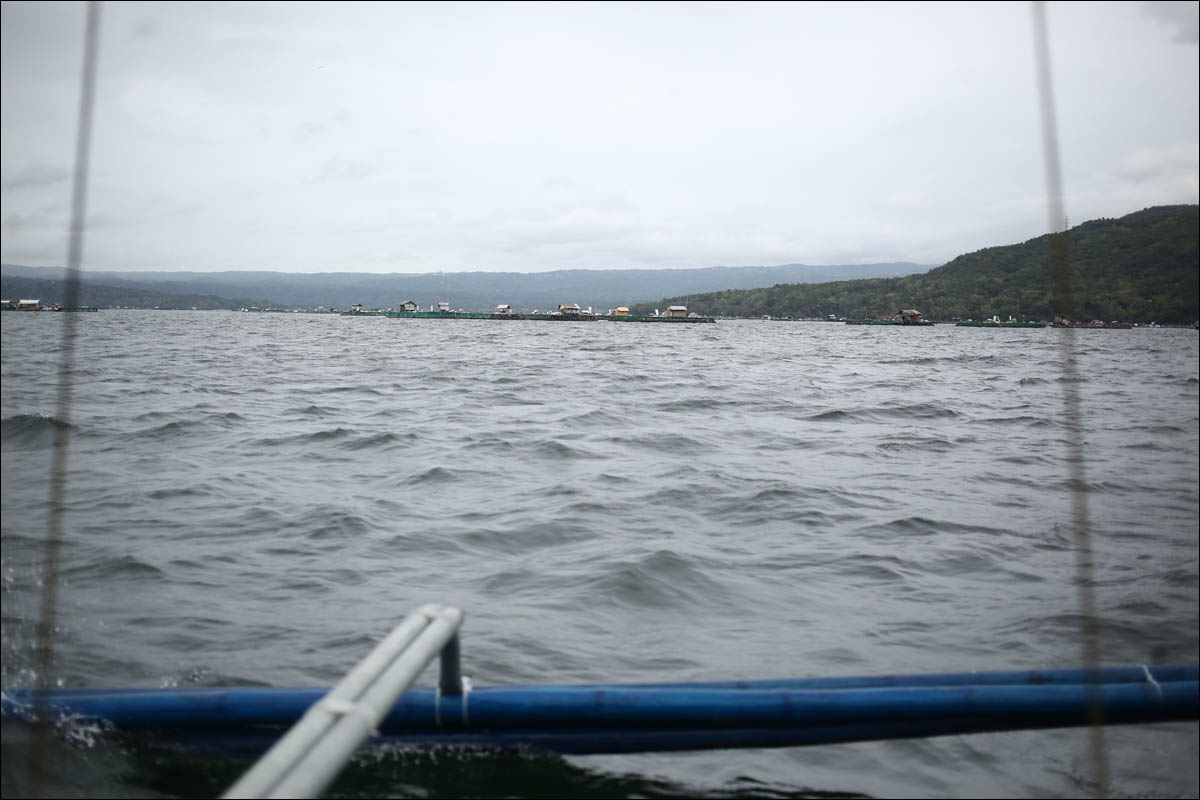 This is not a city on the water, but those same farm
This is not a city on the water, but those same farmTourists constantly go to the island, and scientists have recently come to explore the third island, which is inside the volcano. But they earn residents of the shores of the lake and travel agencies of Manila. When the locals screwed a five-liter bottle with the inscription “Tips for a beautiful view” on a tree near the crater, I think they doubled the budget of their village. In-kind exchanges and trade in deeds are similar to Russian “helpers”, when the whole village today helps build Vaska’s house, and then Vaska helps everyone else in the same situations years later.
This is an atypical settlement because of its cunning geography, but there are technologies there, and, in general, medicine is available, etc. Now we go to other small villages on separate islands.
Equipment
The Filipinos invented two important things for us: the yo-yo, which initially fought, and with which we somehow earned good money in Mosigra. And the butterfly knife, which is familiar to every gopnik of our country. And then the lack of food production (before the arrival of the Spaniards with new agricultural crops) greatly slowed down technical progress.
But even on the small islands came high technology. One of the locals got a radio-controlled drone out of his pants for a piece of bucks, another one brought karaoke and a TV set to one of the islands for the birthday of the 4-year-old princess of the tribe. The princess already had a battery and a generator. We sang songs of a certain group RED ZEPPELIN and roasted a shell called Kunilo, which Andrei from our scientific expedition caught at a depth of 7 meters. At night, the natives brought a Christmas tree garland, wrapped a palm tree around it and turned on the batteries.
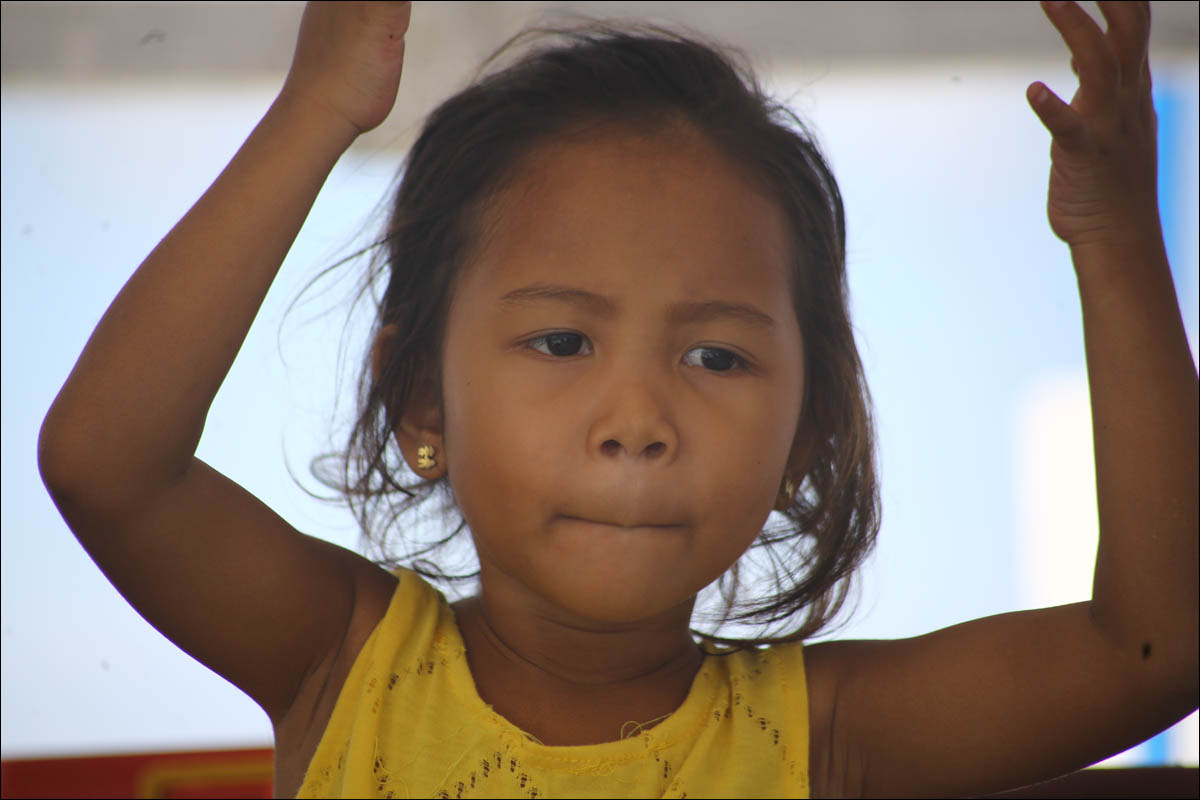 Princess amanda
Princess amandaOn the “big land,” that is, the major islands of the Philippines (where enough people live to build a full-fledged infrastructure), there is almost everything that exists in our villages somewhere in the north of the country. In the capital - all that is everywhere in the world. Everything is advanced and cool there, and it is not very interesting. Much more fun things on the small islands - which is possible to walk around the perimeter on the day. Sometimes 3-5 times.
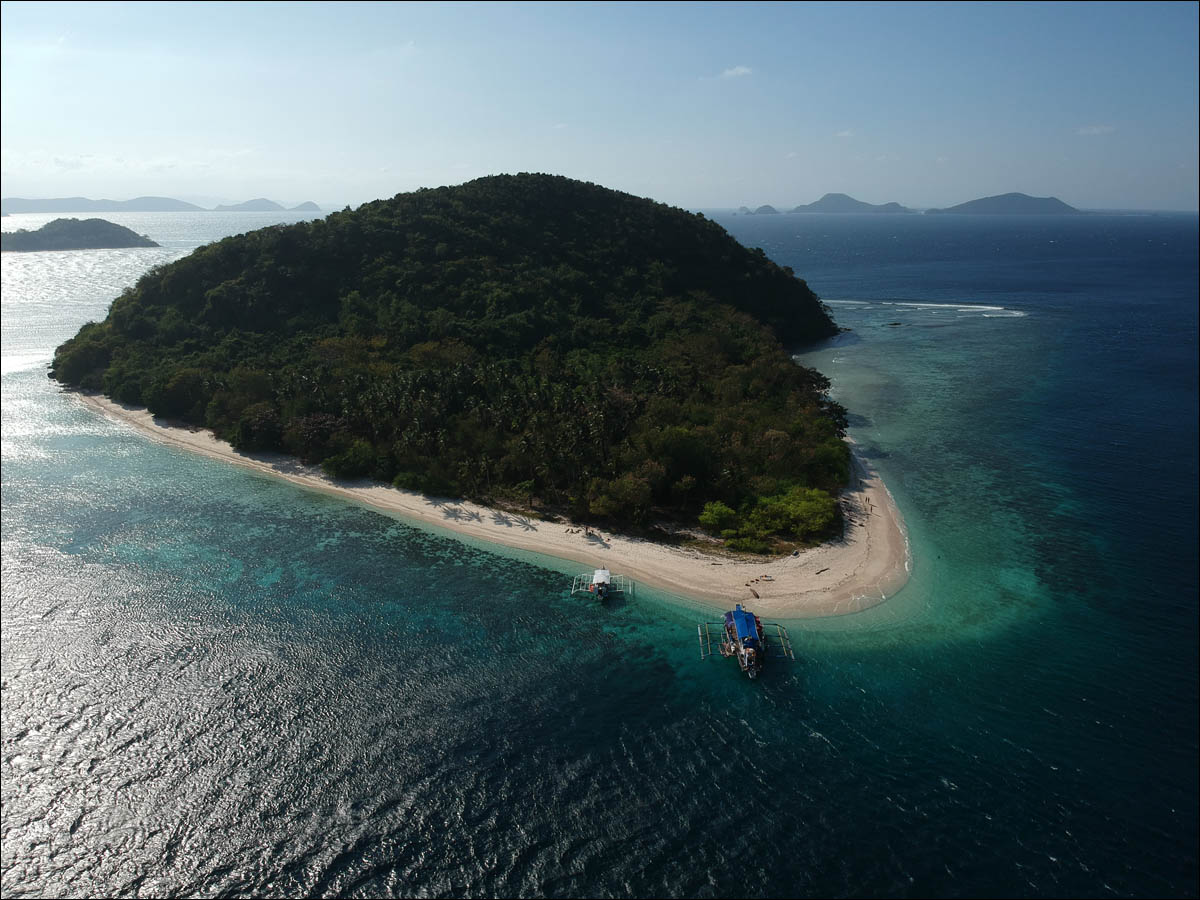
Technologies there are divided into critical and non-critical. Critical - this is all that relates to food production and the ancestral precepts. That is, for example, there are such boats:
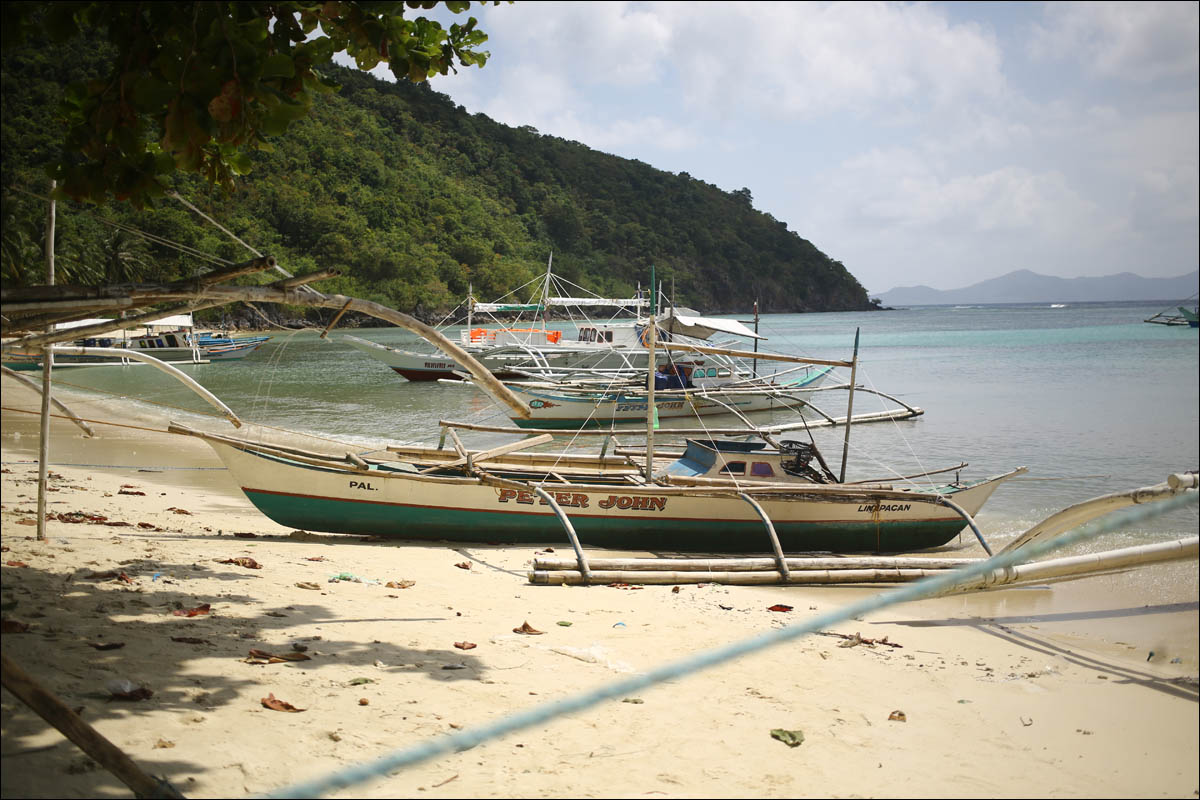 Guess why the first and second boats are the same name "Peter John"?
Guess why the first and second boats are the same name "Peter John"?If you believe "Guns, microbes and steel", these are the very boats with counterweights that were invented here about 5 thousand years ago. Only the materials have changed - the bodies are now steel. Although not everywhere, of course - the little ones are still cheerfully made of wood.
 The good old bamboo serves as a balancer - and only in the city can a welded pipe meet.
The good old bamboo serves as a balancer - and only in the city can a welded pipe meet.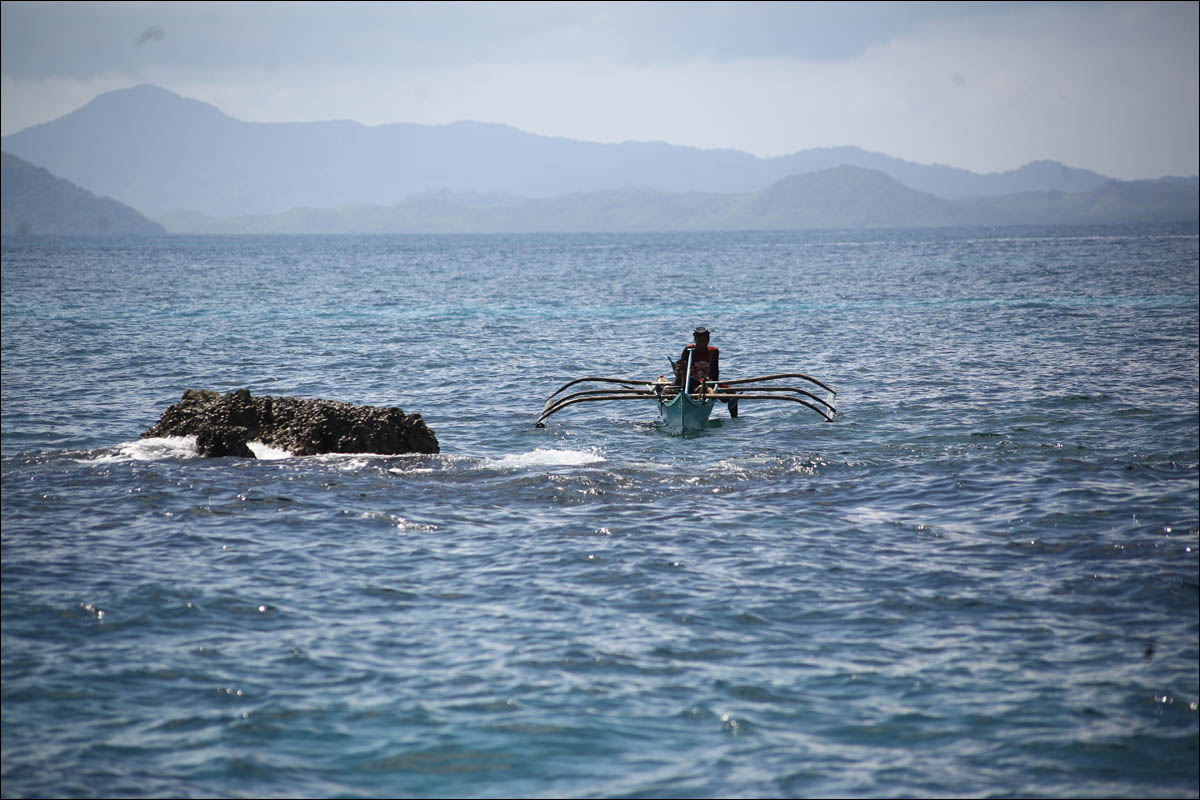
Clearly, such a scheme of boats dictated by nature. The islands are shallow, and the depth in a meter and a half can go about 600-700 meters from the coast. Therefore, a flat bottom and heavy feed. But so as not to turn the wave, balancers. And another kayak on board, usually of blown plastic - to go ashore where it is shallow.
The Philippine boats, which so attracted the attention of
JC_IIB , are built according to one principle - the central hull without a massive keel and two “wings” with balance weights. Balances on large boats of three bamboo logs (they pull the wing down in the air and up in the water), on small ones just from ordinary sticks. Upstairs canopy. Everything is heavy, including the captain and the engine, aft. The latrine - the invention of the twentieth century - behind the hull of the boat in the form of a small booth. Sometimes there is a grill for fish. Hammocks can be pulled between the supports of the balancers - so the fishermen sleep on the road.
The jungle knife - an analogue of machete - has not changed since the invention of bronze, I think. They cut everything here, they open coconuts, put them in Kunilo (not to sacrifice their fingers), dig the ground (when they want to plant something) and so on. He also acts as the main repair tool. In addition to the knife, the inhabitant of the tribe usually has nothing with him.
 Two blows allow you to open a coconut. Especially clever open one.
Two blows allow you to open a coconut. Especially clever open one.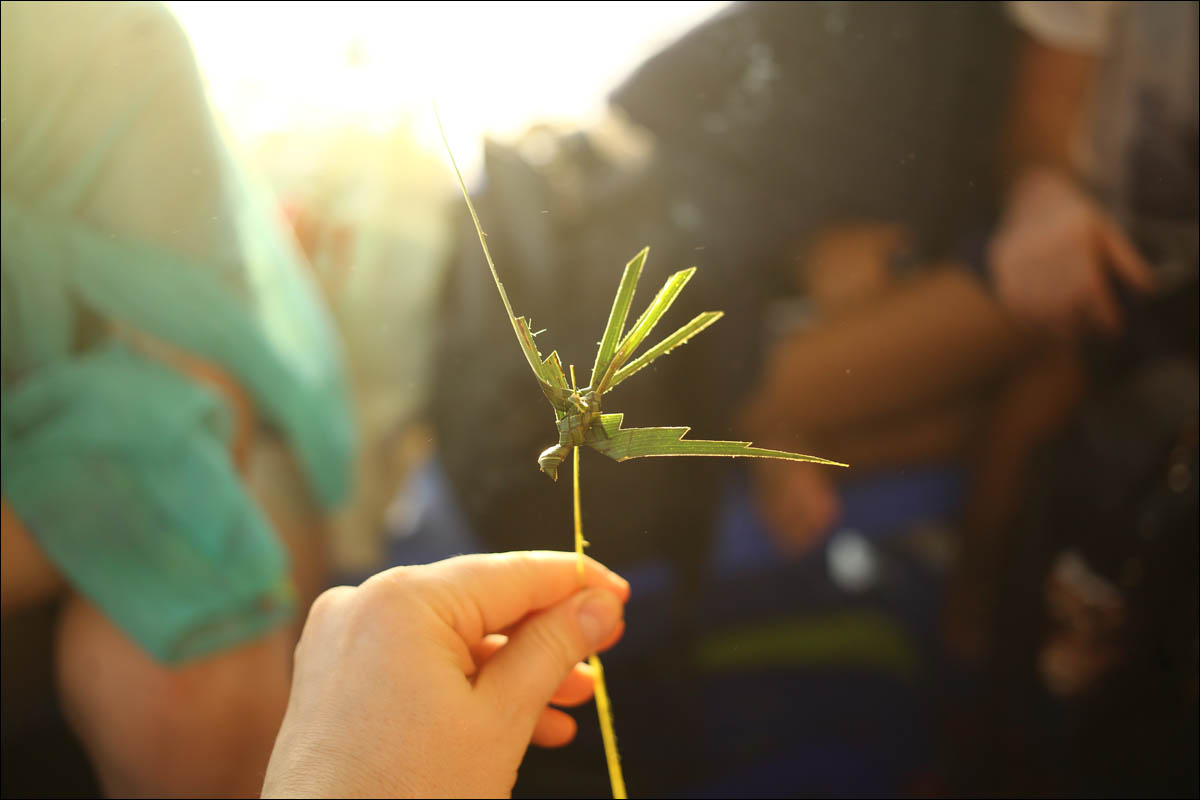 Small job. 3 minutes of waving a knife - and the Filipino presented Ana with a palm tree branch toy on a grass stalk. She twitches in the wind and almost wants to fly away.
Small job. 3 minutes of waving a knife - and the Filipino presented Ana with a palm tree branch toy on a grass stalk. She twitches in the wind and almost wants to fly away.Houses are woven from palm branches entirely - and separate wall plates, and windows, and the roof - for each their own pattern. Hats are also made of palm trees. Bamboo floor. Well digging through the good old prehistoric technology. The fish is fried on a fire, but something more complicated is on a gas cylinder.
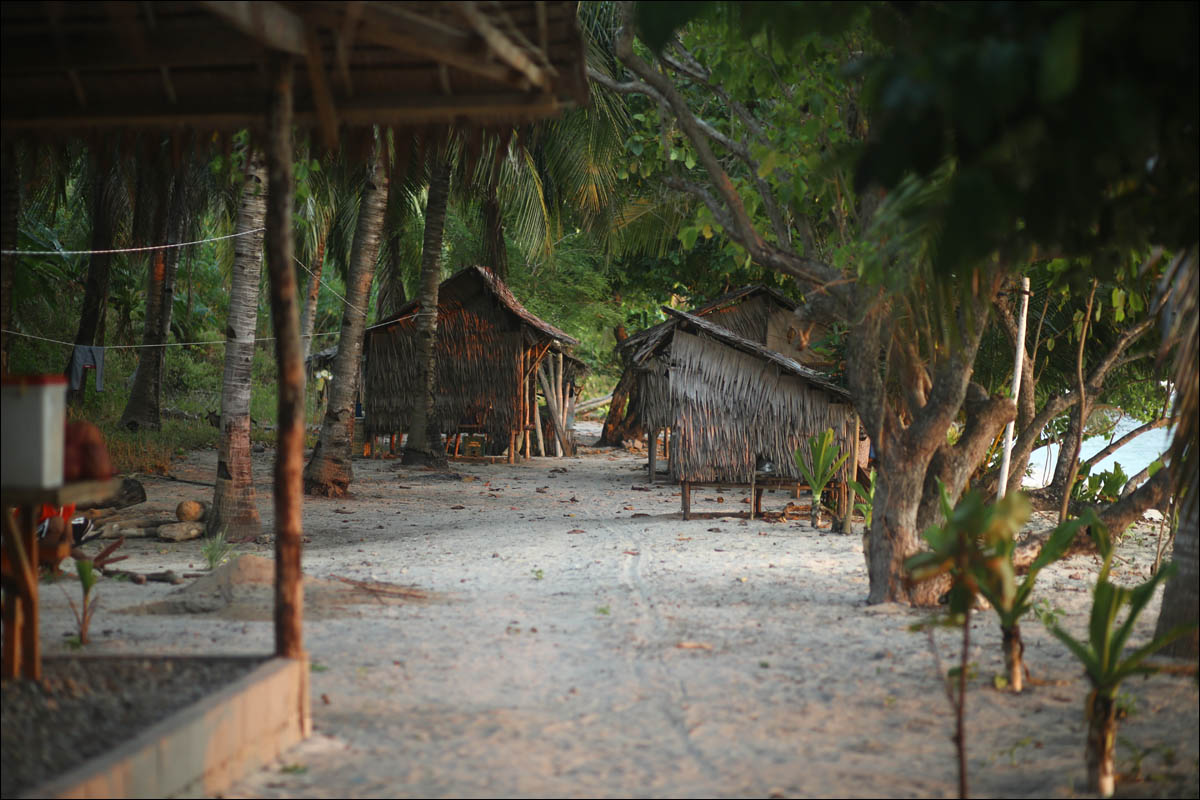
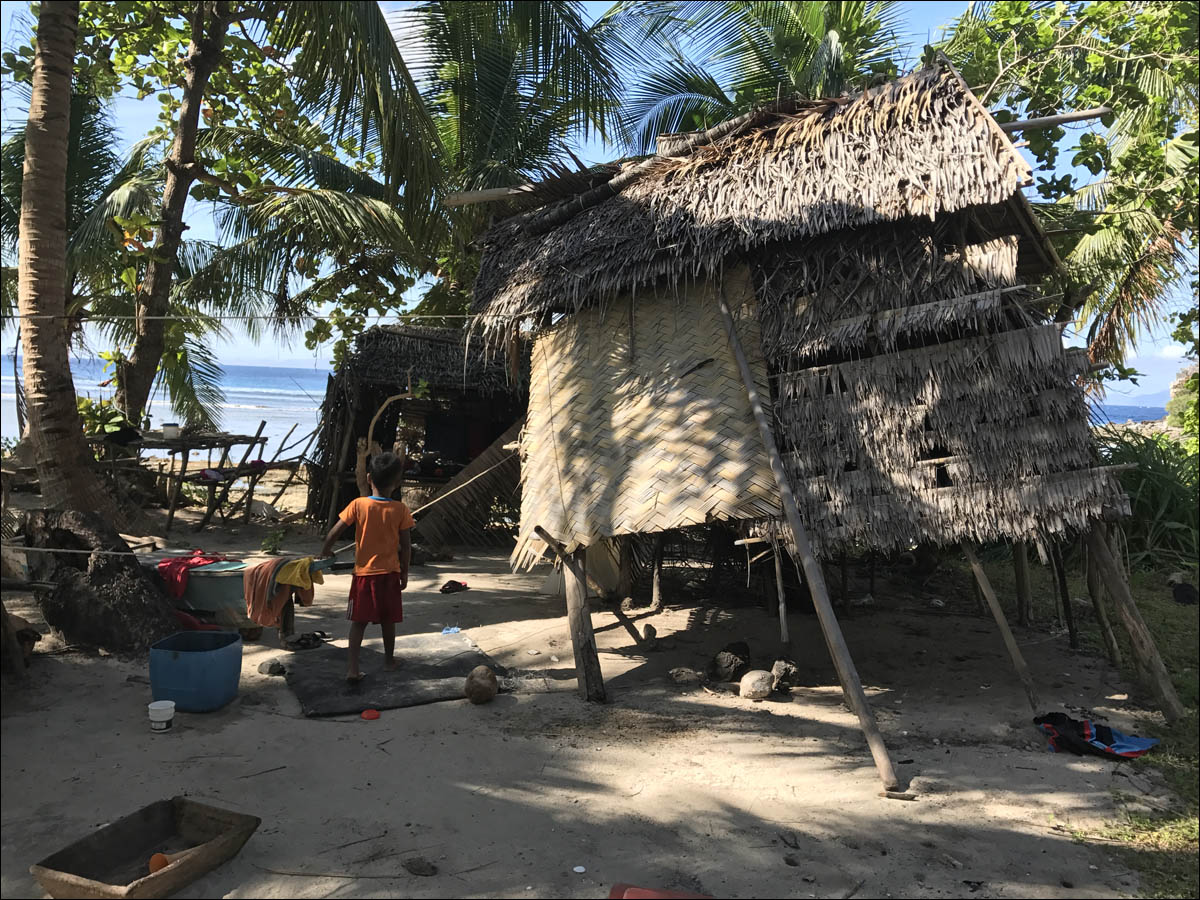
The principles of navigation have not changed since the invention of the boat. The natives of the small islands (I remind you, here I’m just talking about them - this is by no means true for city dwellers) do not walk on water at night. Do not use tacks. Do not build routes to the point that is not visible beyond the horizon. That is, “I see the edge of the island - I go to it” remains the most correct school. And justified, I must say - there are many islands. Where are the shoals and reefs, knows the captain and the looker from many years of experience. Lotsia no. Intelligence is not specifically done.
In general, it works - do not touch.
Mathematics (more precisely, learning mathematics) is also in an extremely rudimentary state. No, there are five identical shops with every product in a village of 1,000 people (I still don’t understand why) - that is, they can earn income. But the same cockfights, which serve as the main cultural event of the village for the month, are regularly canceled. The reason is that if a white and a red rooster is fighting, then it is necessary that the white be put in the same amount as the red. Otherwise, it will not be possible to double the bets of those who bet on the winner. At the local holiday, four roosters had to fight: the first fight was controversial, and the inhabitants put up and discussed the merits of the fighters for almost an hour. And the second did not take place - about 3 thousand were betted on the favorite, and about 1500 pesos - on the second fighter. The roosters were indignant, but the stakes did not change. As a result, the battle had to be canceled, and the stakes were returned. Very humane, given that the battles go to the death of a rooster. Sometimes not knowing the proportions saves lives.
Contact with the twenty first century
Non-critical technologies - everything else. For example, clothes - purchased, it is cheap. If you fail - you can collect your less convenient from scrap materials. In the villages there are satellite dishes for television (they just caress the eye with the originality of installation - bypass even Chinese villages in this regard).
 Village Shop
Village Shop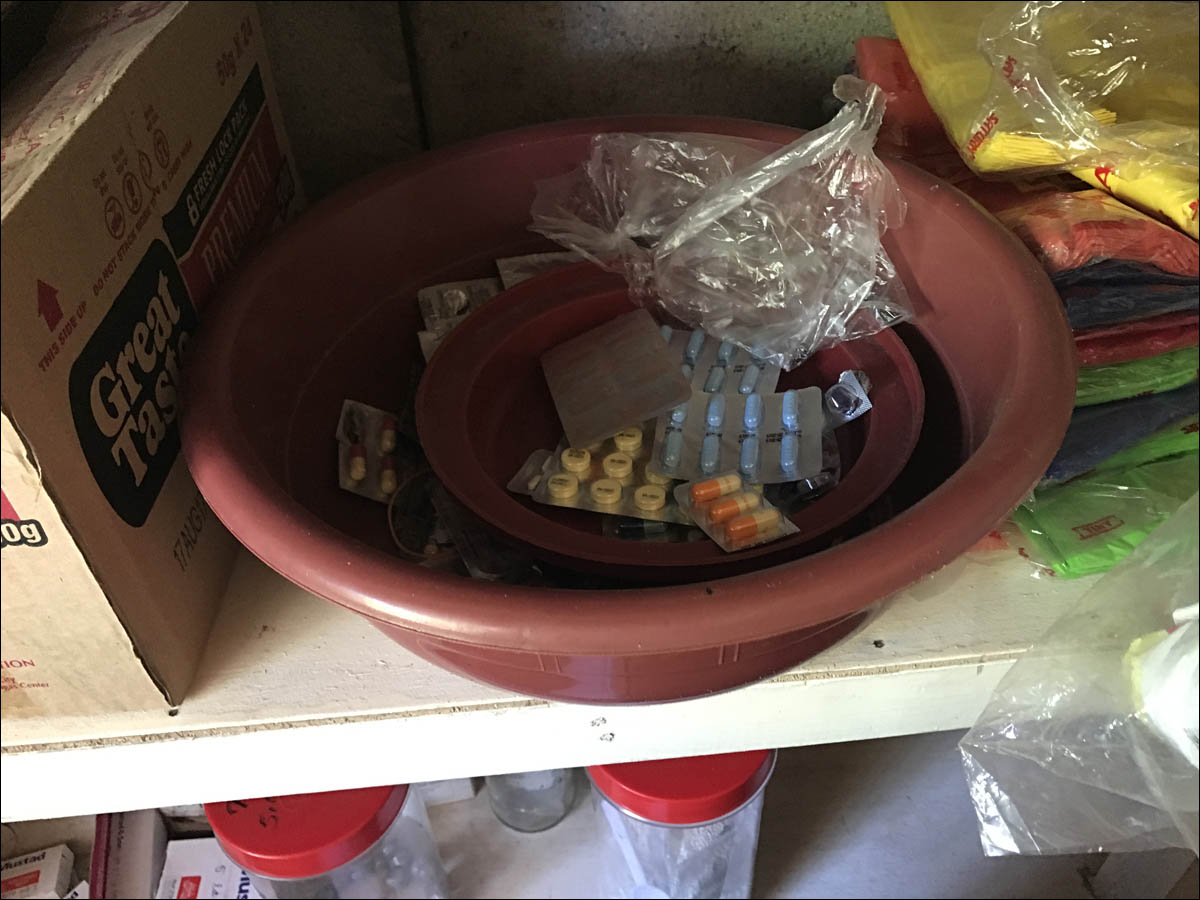 Medicines can sell by the piece
Medicines can sell by the pieceA magical montage of a plate near a rich house in a local large village:
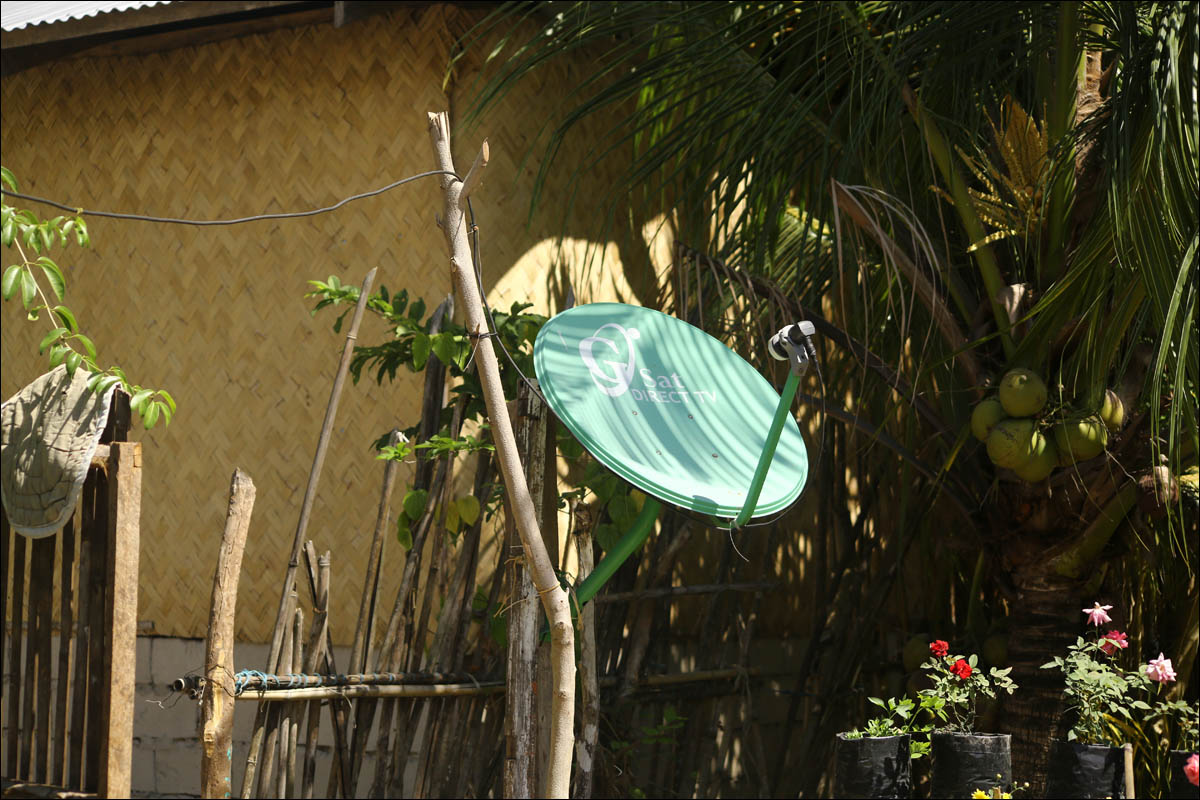
Buffalo plowing, walking tractor - expensive. In general, plowing is also expensive, it is easier to grow fish. Buffaloes, according to observations, on fairly large islands:
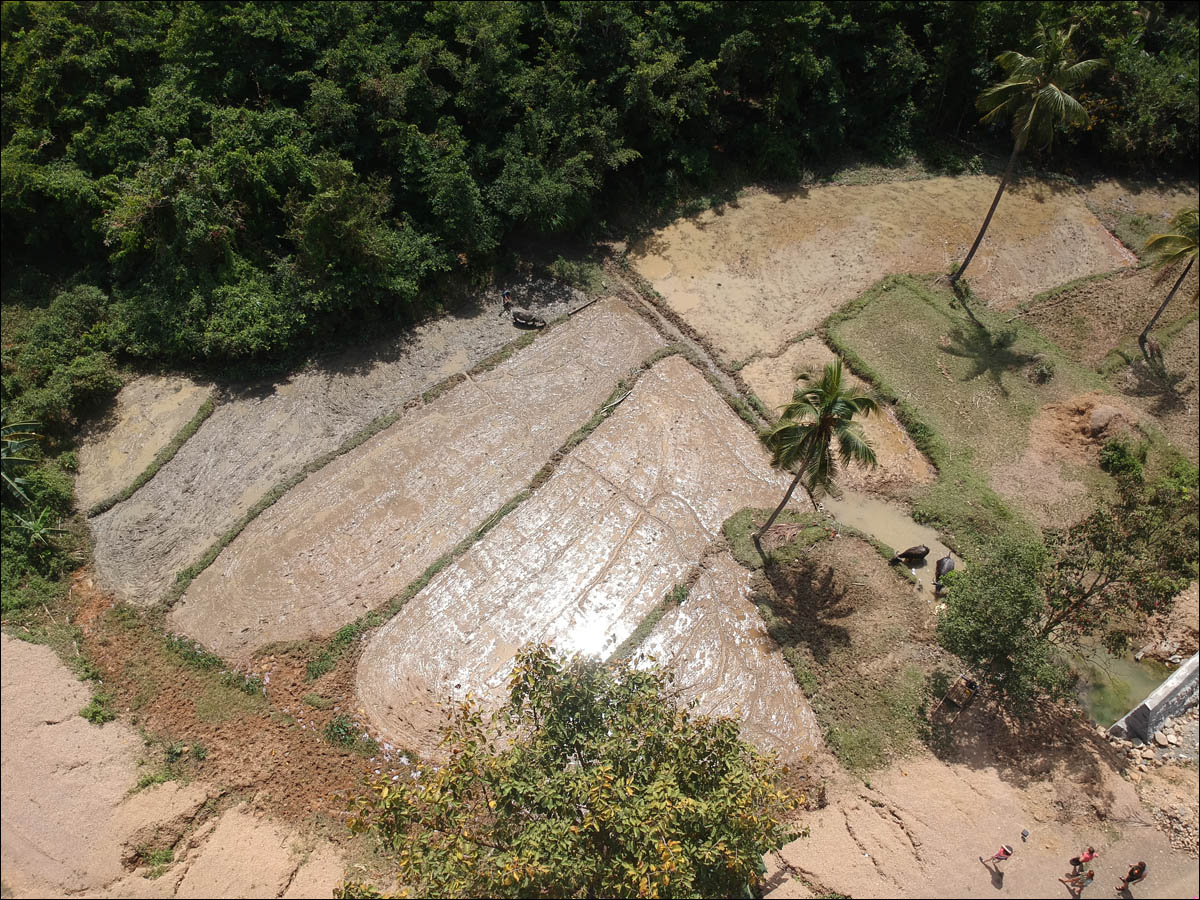
Country Pastoral:
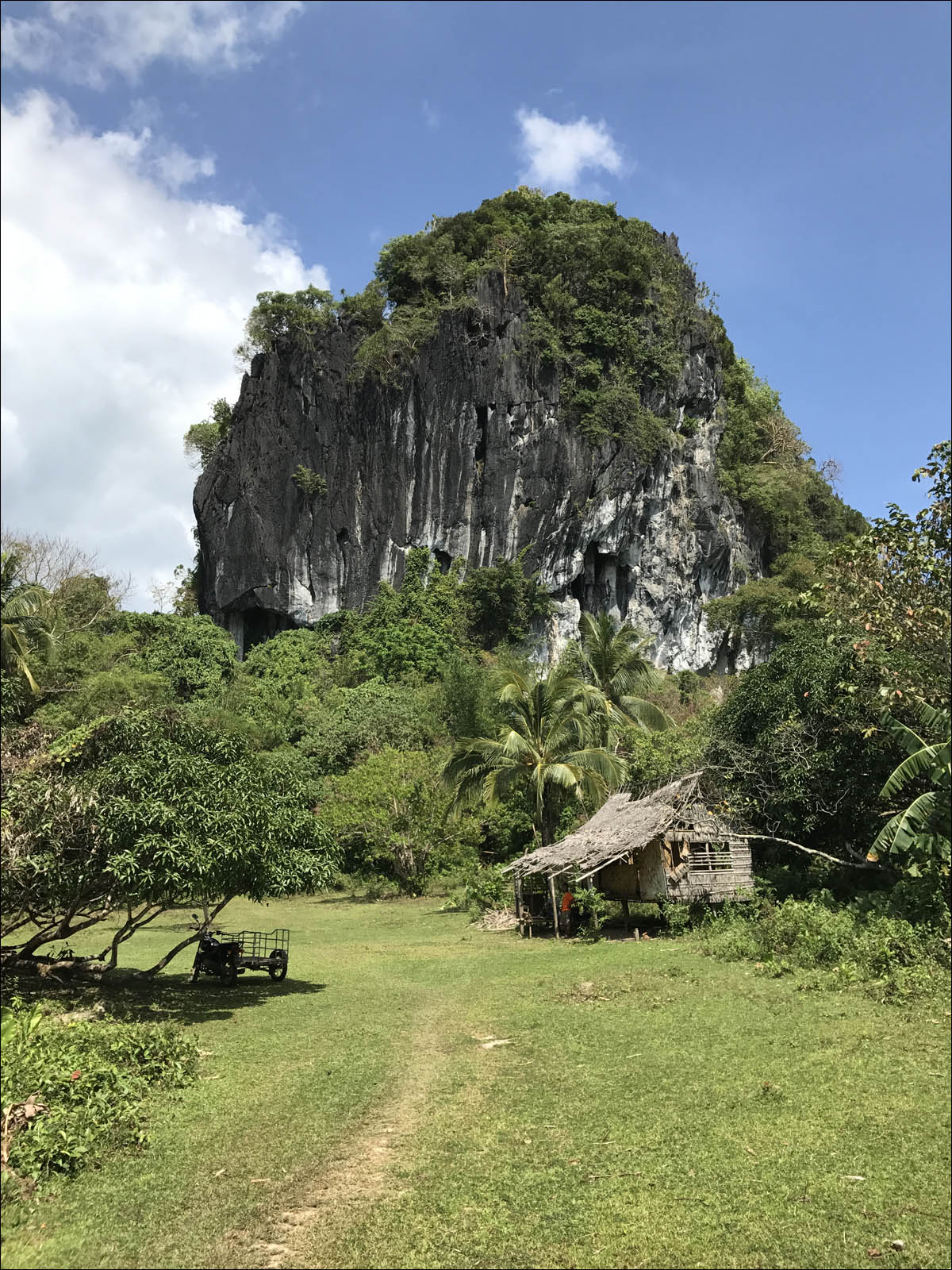
Church. And look, whose!
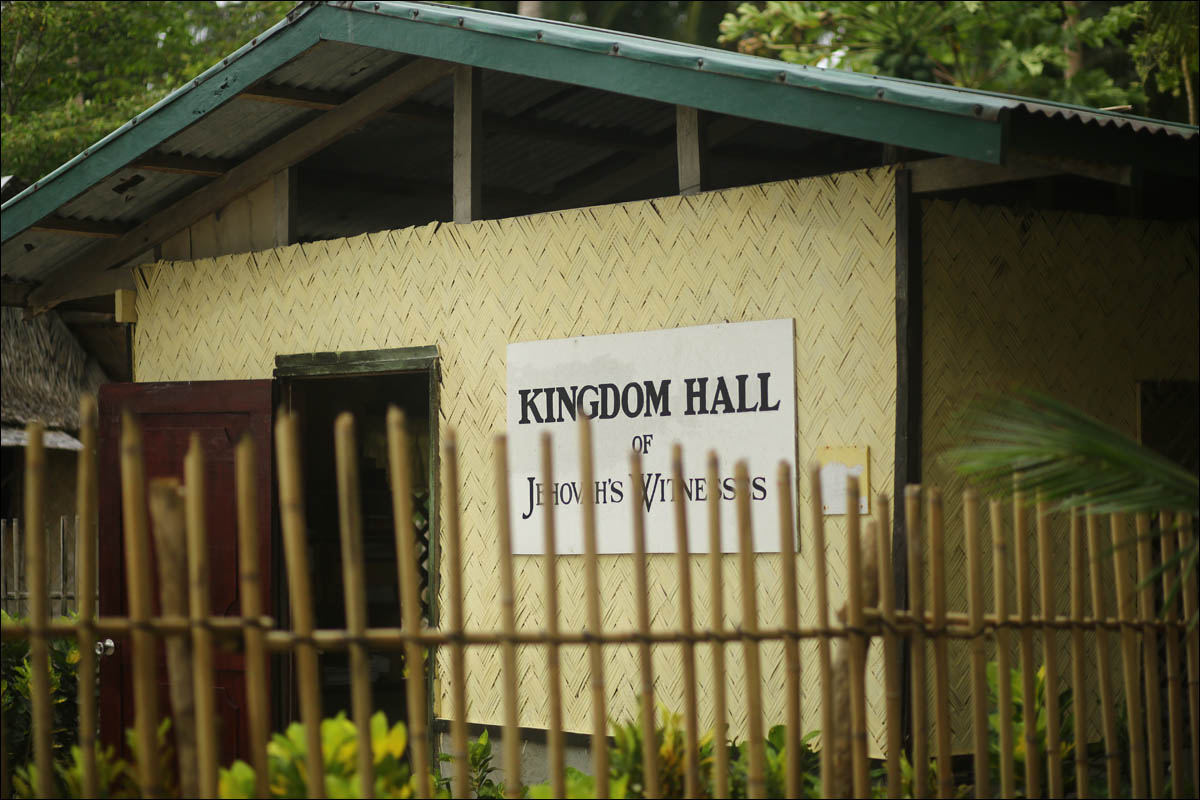
Another store in the same village in Calibana:
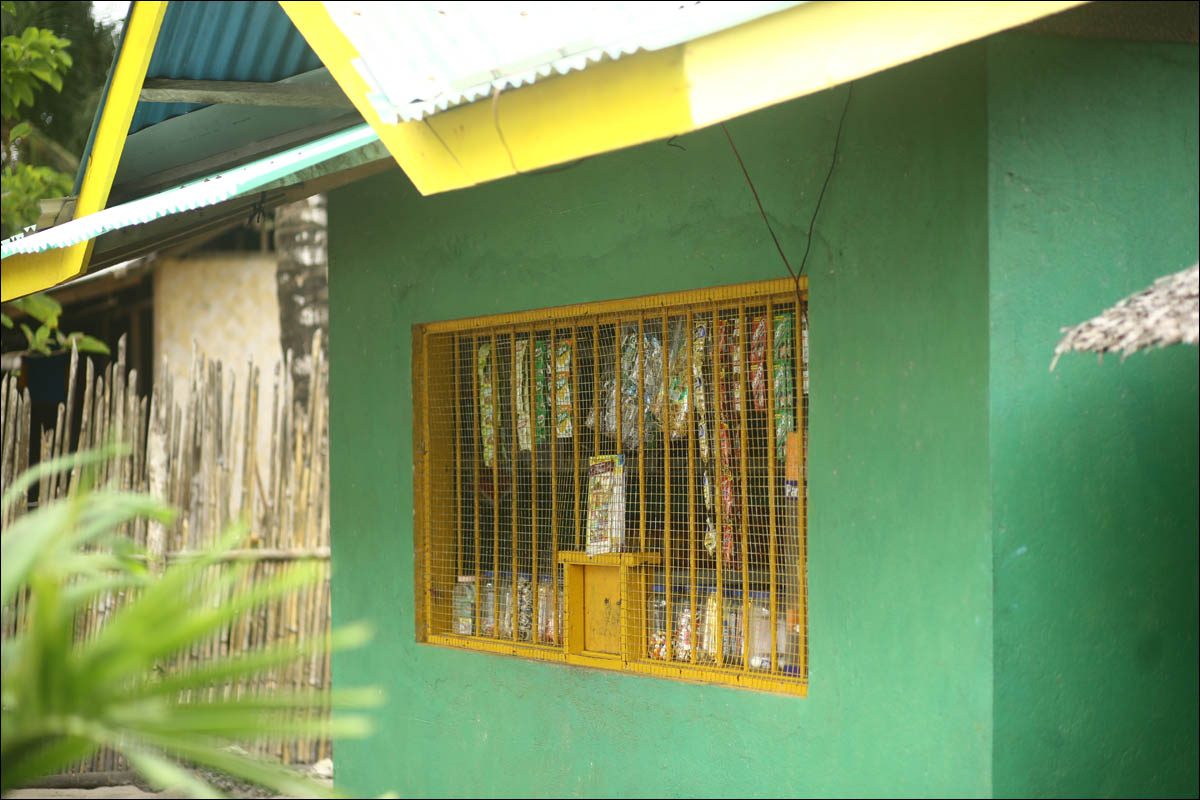
Cell phones are there, and many. Most often a cheap android, but with a camera and access to the network. Chief's wife Rich, our expedition cook, took pictures of cooked food in the evening. To show friends.
There are a lot of infections, and there are just unpleasant ones. You eat with the natives on the island - a chance of typhoid fever. During the expedition, we met biting pigs (guess how we learned that they bite) and bats - this is the risk of rabies. Well and tetanus to upgrade does not hurt, it is done for 10 years. Raw water is absolutely not worth drinking. Mosquitoes carry Japanese encephalitis and malaria. There is no vaccine for malaria, it is not treated (only symptoms are extinguished, the pathogen hides in the liver), so it is better to know in advance where you are going. All meat and fish - just well roasted or boiled. Locals are very saved by the fact that they spend half a day in water to the waist (and some kind of salt water, and antiseptic), well, they eat a lot of fried water. Although here at the place of the owner of the rooster winner in cockfighting, I would not eat nuts with bloody fingers.
BUT! And here you have a new phobia - a strong wind is swinging palm trees, and a coconut can fall from there. As in the advertising "Bounty", only there it is dried and refined, and the present will be more than three times in diameter, green and well dispersed by unrelenting physics. They fall from 7-10 meters.
But let's go back to the city.

Here on the way is charging the battery of a fishing boat:
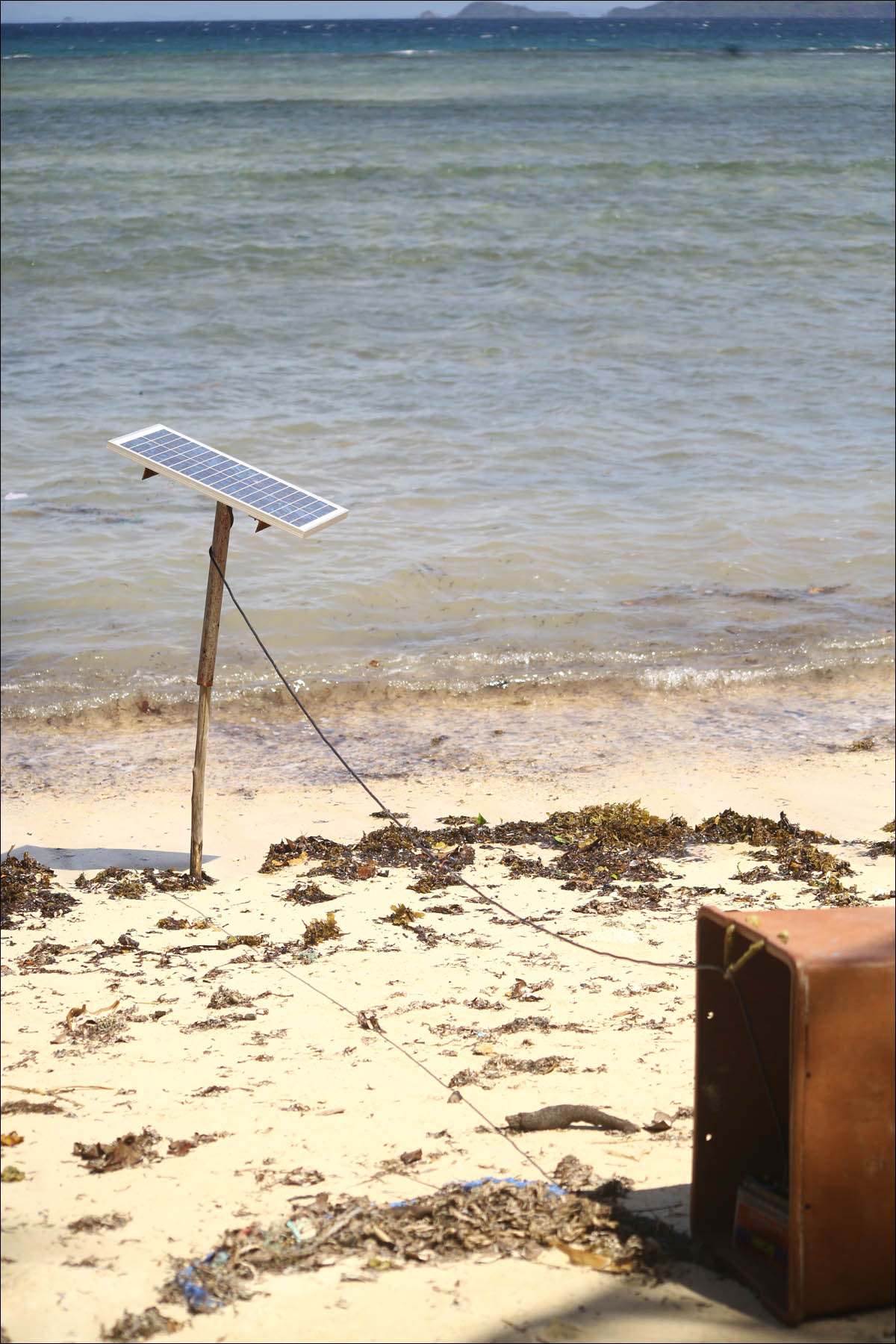
In cities larger (4-6 thousand people) with electricity do not stand on ceremony:
 Wonders of switching - it works even in the rainy season
Wonders of switching - it works even in the rainy season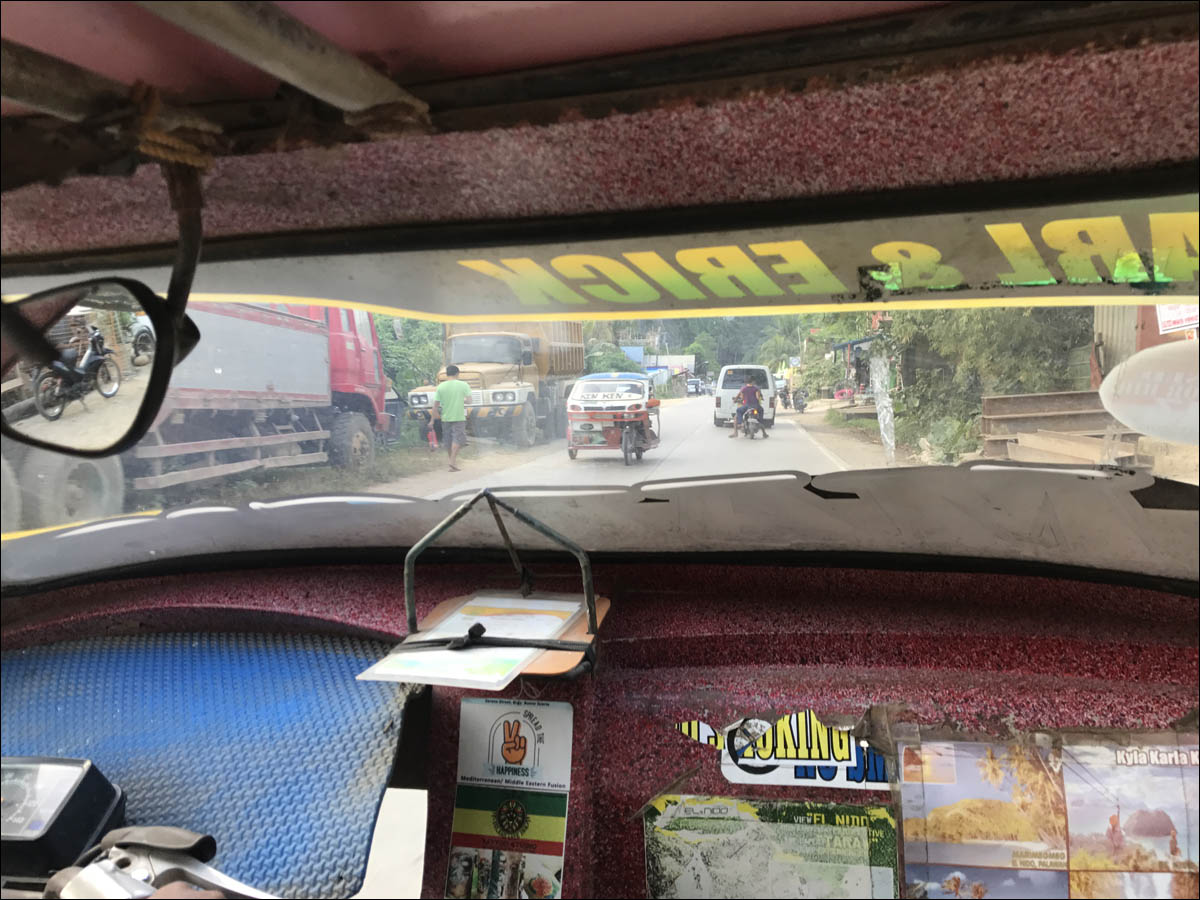 Tricycles - motorcycles with a welded body around, fit 3 people, if uphill, or five - if down. Every tricycle has a name like a ship.
Tricycles - motorcycles with a welded body around, fit 3 people, if uphill, or five - if down. Every tricycle has a name like a ship.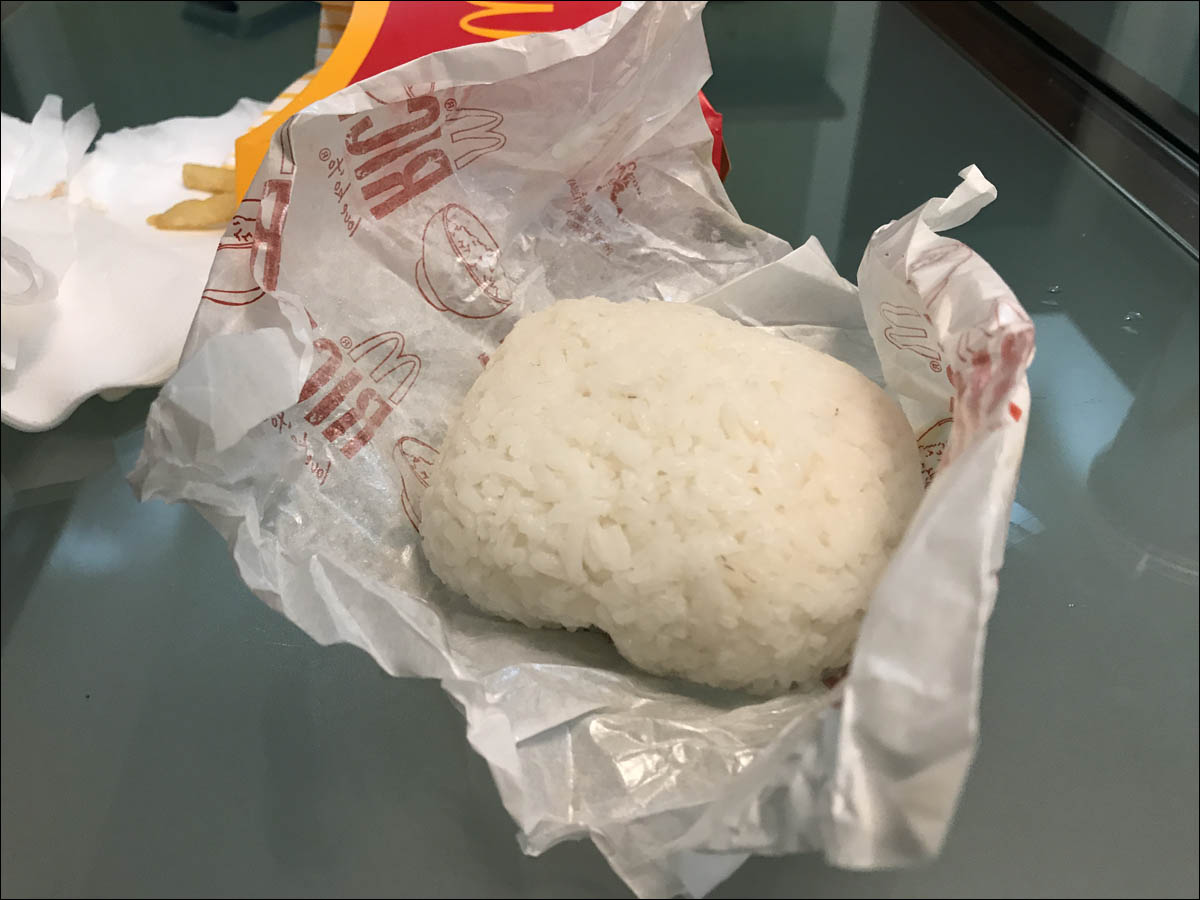 Special fast food menu - just rice
Special fast food menu - just rice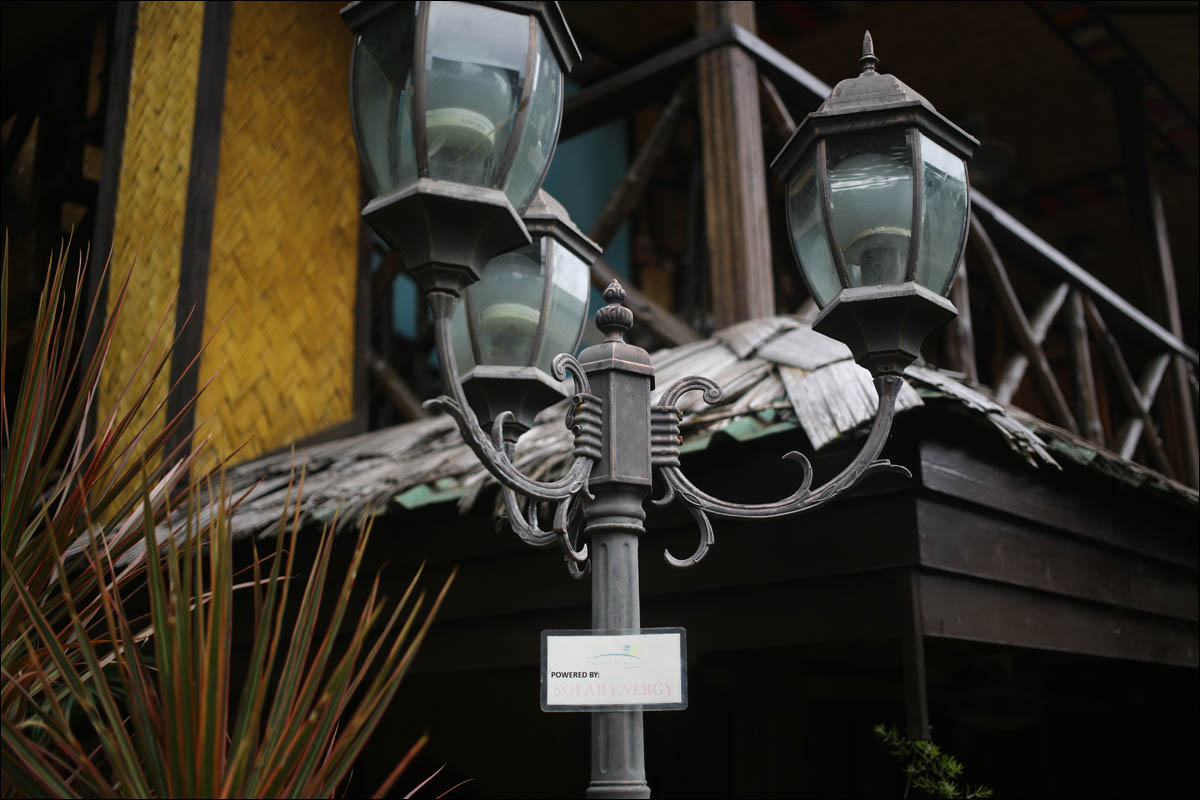 Princess has green energy
Princess has green energy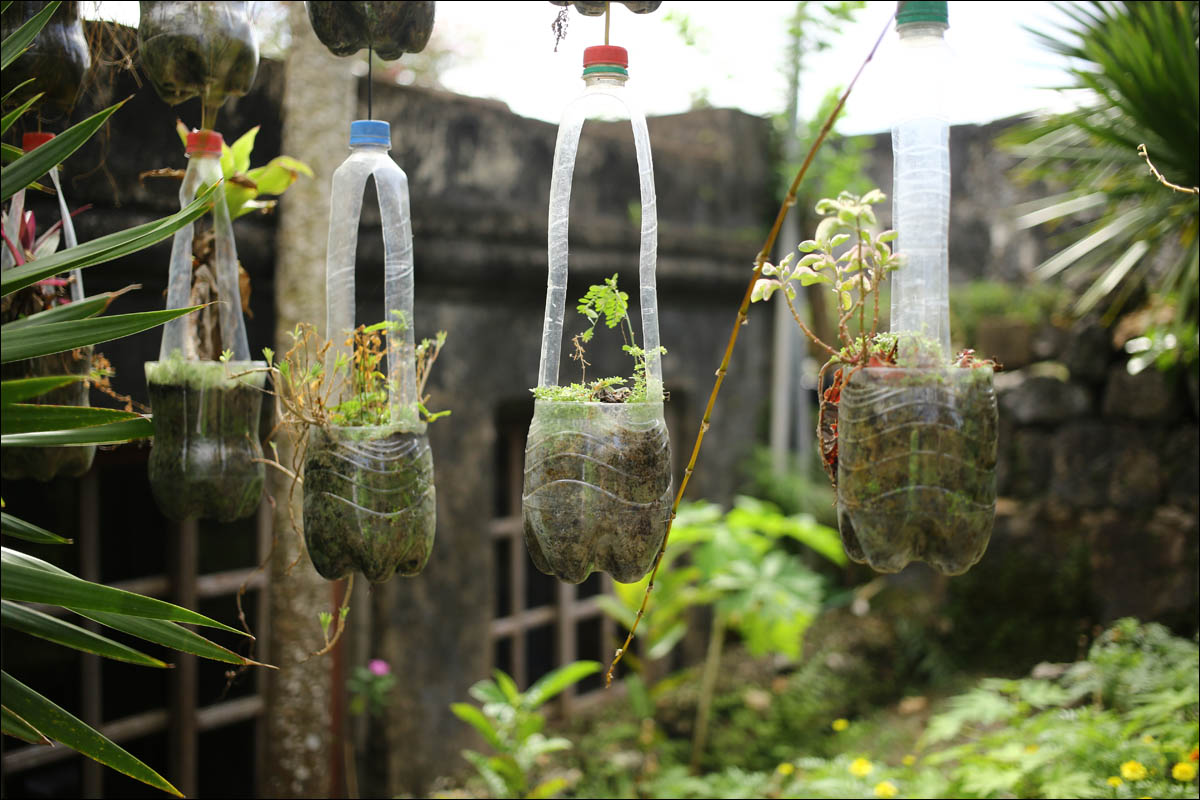 The descendants of Bakhmetyev are alive
The descendants of Bakhmetyev are alive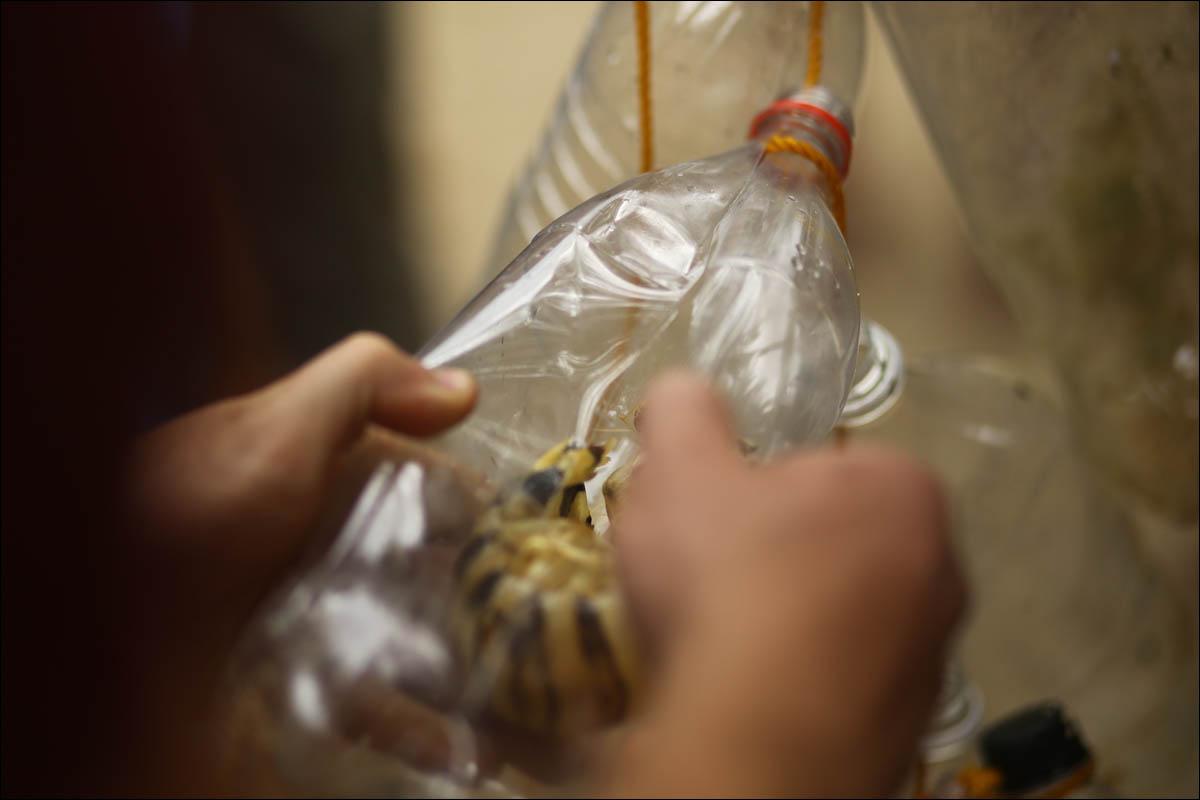 Ground shrimp trap
Ground shrimp trap
And all the inhabitants are wildly positive. Continue to give birth - now medicine and cheap food can survive much more often.

Residents on the wildest positive, I would say:

But seriously, we in Russia followed a similar strategy, when in a large family only 1-2 children survived to adulthood. Basically - mortality during childbirth and various incurable diseases mowed down. You can read more on any random link, I came across
this one . The emergence of new crops, and then antibiotics, sharply turned the tide. In general, a large number of children in conditions of poverty is still something like a pension investment, they help parents in their old age. But now around the world, it seems, everything is going to ensure that the “one child” strategy turns out to be more profitable in this respect too.
Judging by Manila (this is my personal estimate), population growth will slow down as the well-being of families grows. The city in the area of Fort Bonifacio is already incredibly beautiful, there is one of the coolest in the design and implementation of residential areas in the world. This is a kind of advanced experiment for the whole country.
Of course, I may be mistaken in my assessment, since for a couple of weeks it is quite difficult to make a detailed impression. But on the islands, where civilization was brought very unevenly, it was at least interesting to visit. Well, I envy the people in many ways: they have a very quiet happy life.